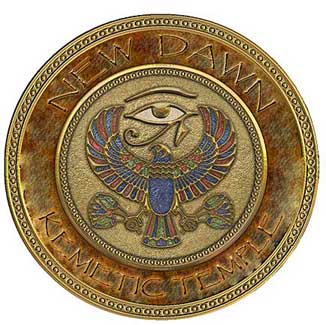|
|
|


~Monroe Edgar~
The modern village of Qantir (Khatana-Qantir) marks what
was probably the ancient site of Ramesses II's great capital, Pi-Ramesse or
Per-Ramesses ("House or Domain of Ramesses"). This city is situated
about 9 kilometers (5.5 miles) north of Faqus in Sharqiya province of the eastern
Nile Delta (about 60 miles north-east of Cairo).
It is known that Ramesses II moved the ancient Egyptian capital from southern Egypt into the Delta, probably both to escape the influence of the powerful priests at Thebes, and to be nearer to the costs of modern Turkey and Syria in order to protect Egypt's borders.
The location of this city, well known from documentation, was long in question. However, in the 1920s, decorated tiles, including some with the name of Seti I and Ramesses II were discovered in the area.
More recently, beginning in the 1970s, the site was examined by a German expedition, and the Austrian Archaeological Institute under the direction of Manfred Bietak. They have been using magnetometer (gradumeter) to map out the long lost city. This relatively new method of archaeological discovery is mostly non-intrusive, and in many cases where the land is agricultural in nature, is the only suitable method of exploring a site. By late 1999, some 75,000 square meters had been measured in the fields around Qantir, and domestic areas, administrative quarters of a vast palace-temple compound, a possible cemetery and a region with poorer houses were defined.
Their work firmly established the site as Pi-Ramesse, with ruins stretching as far as Tell el-Dab'a to the south covering an area of some thirty square kilometers. Edgar Pusch, head of the German archaeological team, tells us that, "Something like this has never been detected before in Egypt". The computer plottings made by the team show winding streets, structures that look like small houses, spacious buildings, palaces and a lakeshore. Some of the amazing finds include a huge stable, to which was attached royal chariot and arms factories.
Covering nearly 17,000 sq. meters, the stable had six identical rows of halls connected to a vast courtyard. Each hall had 12 rooms, each 12 meters long. The floors sloped down to holes for collecting horse urine that Pusch speculates was used in dyeing cloth, softening leather and fertilizing vineyards."
Apparently, these stables were able to hold as many as 460 horses and is the largest ancient stable ever discovered. There were actually two layers of stables, with the larger and later stables probably having been built by Ramesses III.
"Horses were very important in the expansion of the Egyptian empire and these stables were built on a strategic location close to the trade routes leading to Lebanon and Syria, and not very far from the Hittites"
Below the two stable layers, workshops for the manufacture of glass, faience and Egyptian blue were found, and below this layer, a palace like complex was found that contained a gilded gold floor overlaying stucco with an embedded polychrome cartouche of Ramesses II.
Around the arms and chariot factories, chariot parts, arrow shafts, flint arrowheads, javelin heads, daggers and bronze scales for body armor have been discovered.
In ancient times, there were many more branches of the Nile river located in the Delta, but only two remain. Pi Ramesse was located on an extinct branch that dried out beginning in the 20th Dynasty. Hence, kings of the 21sty Dynasty moved virtually all the monuments, item by item, to the new capital at Tanis (as well as to other cities).
It is probable that a number of temples were located within this ancient city. These religious centers included a great temple of Re, along with other temples to Amun, Ptah and Sutekh (Set, or Seth). The remains of the temple dedicated to Sutekh have been located in the southern part of the city. There were probably many other smaller temples and chapels. We believe that among these were temples dedicated to Wadjit and Astarte.
Unfortunately, it will probably require another twenty years for the Magnetic mapping alone to be finished. Proper excavations of such an areas as the stables would require a lifetime to complete.